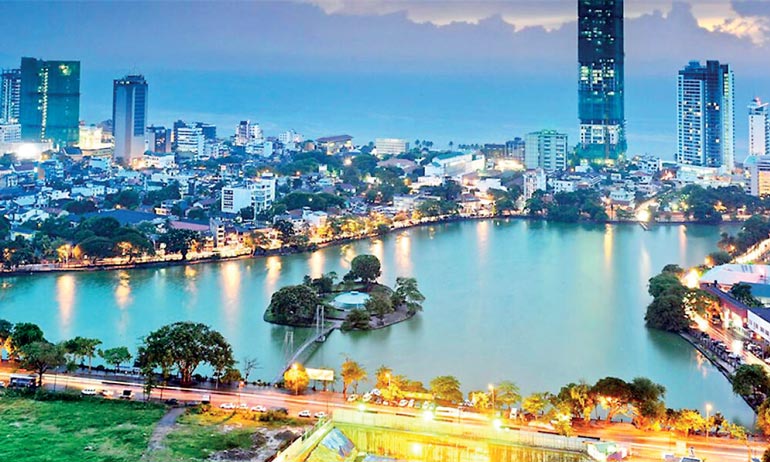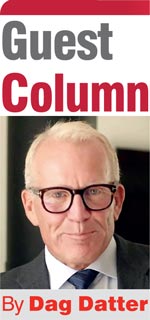Saturday Oct 18, 2025
Saturday Oct 18, 2025
Friday, 17 October 2025 00:20 - - {{hitsCtrl.values.hits}}

When governments diversify their income sources beyond taxes, they reduce fiscal risk and increase economic resilience
 Infrastructure is often hailed as the engine of productivity and economic growth. Yet in many countries, roads crumble, railways stall, and essential services like water and electricity remain inadequate. The common excuse? A lack of funding—or the political will to raise taxes and cut spending.
Infrastructure is often hailed as the engine of productivity and economic growth. Yet in many countries, roads crumble, railways stall, and essential services like water and electricity remain inadequate. The common excuse? A lack of funding—or the political will to raise taxes and cut spending.
But governments have two sources of revenue: taxes and non-tax income. The latter comes from managing public assets and liabilities—essentially, the government’s balance sheet. While resource-rich countries often generate income from oil, gas, or minerals, even countries without such endowments can tap into overlooked assets by managing them more professionally.
Take Singapore, for example. Despite having no natural resources, around one-fifth of its government spending is funded by non-tax revenues. These come from investment returns on public assets, generating about 7% of GDP annually—a figure nearly equal to its corporate tax receipts.
Singapore’s success stems from decades of fiscal discipline and long-term strategy. It has built one of the world’s largest sovereign wealth portfolios, despite its resource scarcity. This includes Temasek Holdings (which manages corporate assets and real estate), the Government of Singapore Investment Corporation (GIC), and the Monetary Authority of Singapore, which holds foreign reserves. Collectively, these entities manage assets valued at three to four times the country’s GDP—surpassing even the sovereign wealth funds of Norway and Saudi Arabia.
Globally, public assets are estimated to have a value three times global GDP, with half of those assets being commercial—real estate and corporate holdings. Yet, very few governments account for or manage these assets strategically. Countries like New Zealand, which adopted accrual accounting decades ago, stand out for recording and valuing all public assets and liabilities at market prices. But most governments still ignore large swaths of their asset base—particularly real estate, which alone is estimated to be worth as much as global GDP.
Much of this overlooked real estate lies around transport infrastructure—railways, ports, airports, and disused industrial sites. These areas, if redeveloped, can significantly boost public wealth and urban renewal.
Hong Kong’s MTR Corporation is a powerful case in point. Inspired by Japanese railway models, MTR built a metro system the size of New York’s without tax funding. Instead, it leveraged land development rights near stations, with property revenue making up 40% of its income annually since the 1990s. This “rail plus property” model turned infrastructure into a self-funding investment.
Similarly, Hamburg and Copenhagen transformed abandoned port infrastructure into thriving urban districts—without relying on taxpayers. These cities created Urban Wealth Funds (UWFs) to manage and develop these assets professionally.
In Hamburg, the city-owned HafenCity GmbH redeveloped a 2.4 sq. km harbour area, delivering 7,000 residential units and commercial space for 35,000 people—plus schools, universities, and a landmark concert hall.
Copenhagen’s UWF, ‘By og Havn I/S’, repurposed an old harbour and a former military site. Covering twice the area of Hamburg’s project, it resulted in over 33,000 new homes, 100,000 jobs, and major infrastructure upgrades, including a metro extension, university, and new parks. All funded by the project’s own revenues.
These developments not only provide a boost to the economy and opportunities for the private sector but also increase the housing stock, promote social mobility, and improve urban liveability—key ingredients for long-term prosperity.
When governments diversify their income sources beyond taxes, they reduce fiscal risk and increase economic resilience. At a time when many are searching for ways to fund critical investments, a balance sheet approach offers a powerful solution.
Focusing on net worth—the difference between public assets and liabilities—enables, and encourages, better financial management than does relying on debt-based fiscal rules, which paint an incomplete picture of fiscal position. Without understanding the full balance sheet, governments risk underinvesting, misallocating debt, and wasting resources.
Importantly, if debt is used to fund consumption for short-term political gain, rather than productive investment, it becomes a burden on future generations. Intergenerational fairness requires that today’s borrowing builds assets that benefit tomorrow’s citizens—not just today’s voters.
By setting a net worth target, governments could shift incentives toward smarter, long-term investments in infrastructure, housing, and innovation—laying the groundwork for sustainable growth.
Ensuring sustainable prosperity requires governments to go beyond short-term fixes and look strategically at their balance sheets. Managing public assets and liabilities more effectively isn’t just about accounting—it’s one of the greatest untapped opportunities to unlock economic potential. By embracing a net worth approach, policymakers can fund infrastructure, reduce reliance on taxes, and create cities that are both liveable and future-ready.